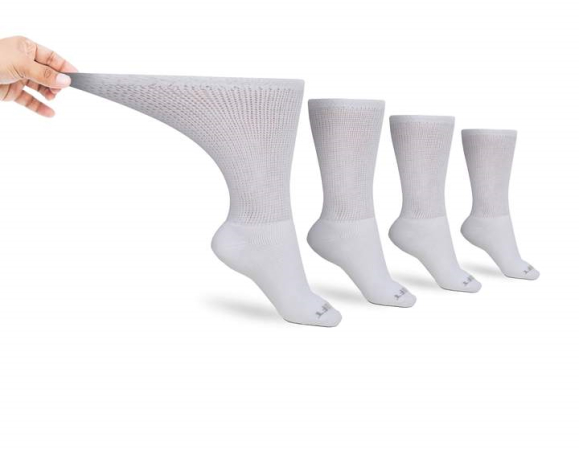
Having diabetes is indeed a challenge. It takes a surmount of strength, patience, and discipline to be able to create a positive and healthy quality of life when living with such a condition. And it doesn’t really help that diabetes not just brings itself to the table, but it comes along with other issues, problems, and complications, such as having diabetic foot ulcers.
It is pretty common for diabetic patients to encounter diabetic foot ulcers. This happens when they experience high blood sugar or if they start going through diabetic neuropathy, wherein they feel numb in some areas of their bodies, most often their feet, due to nerve damage.
From there, it will be hard for them to notice any wounds, blisters, sores, or lesions in their feet, and when left unnoticed and untreated, those open skin damages will become infected. And the worst-case scenario is that they will need to go through an amputation to treat it completely.
What Are The Signs Of Diabetic Foot Ulcer
Here are some signs to look out for so that you can stay on top of the Diabetic Foot Ulcer. It is important that once you notice any of these signs that you don’t let it go untreated or go treating it yourself. Be sure to go to your doctors and health professionals as early as possible so that they can provide you with proper care instructions.
- Darkened skin on the affected area
- Diminished ability to sense hot or cold
- Loss of hair in the area
- Numbness
- Pain
- Tingling
- Any changes to the skin or toenails, including cuts, blisters, calluses, or sores
- Discharge of fluid or pus
- Foul Smell
How To Treat Diabetic Foot Ulcer
To reiterate, the best thing to do when you find yourself with a diabetic foot ulcer is to go straight to your doctors and health professionals so that they can assess the situation and find the best solutions for you. But of course, as the saying goes, prevention is better than cure, so being aware that these complications exist is the first step. And next would be to take precautionary measures to ensure that you are not setting yourself up for failure and being disciplined by creating a habit or a routine of checking your feet daily, keeping them clean and dry, wearing the proper footwear, finding the right balance of activities and diet to keep you in tip-top shape.
However, if you do find yourself with an infected ulcer, what is most likely to happen is that your doctors or health professionals will prescribe either antibiotic, some wound care, or, worst-case scenario, hospitalization.
How To Prevent Diabetic Foot Ulcer
Here are some things you can do to prevent experiencing Diabetic Foot Ulcers:
- Check your feet regularly. Schedule a time every day when you can check your foot for sores, blisters, wounds, calluses. And remember, don’t treat them by yourself no matter how minor it is
- Bathe and clean your feet properly and then keep them dry. This also includes your toenails.
- Wear diabetic socks and shoes. There are lots of footwear available that’s made especially for people with diabetes. These socks and shoes offer extra support and cushion and are non-binding.
- Make sure you position yourself in a way that blood flows properly.
- Check your blood sugar regularly.












